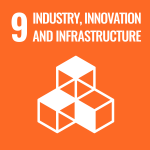Solvents – a key ingredient of energy efficient and sustainable materials
Solvents dissolve other substances. Water is a solvent, which is easily available and simple and safe to handle, but water cannot dissolve everything. This is why we need chemical-based solvents.
Where are solvents used?
When you see solar panels or bridges you probably don’t think that solvents played a big role in making them. Yet they do. Solvents are essential to glue solar panels together. Coatings with solvents protect infrastructure like bridges and dams from corrosion and rust, extending their lifetime by decades.
Solvents are an essential component of insulation foam, because they prevent insulation sheets from sticking to each other. They are also increasingly used in innovative cutting-edge insulation techniques such as aerogels and vacuum panels.
And of course, the most ubiquitous item of everyday life – a smartphone – can’t be made without solvents. Or any electronic equipment, for that matter, because solvent-based adhesives are used to produce circuit boards, and solvents help clean the boards and the screens. Also, when we talk about computers of the future which will be made of optical circuits instead of electricity, solvents will play a key role in creating these optical circuits.
And this is just a fraction of what solvents can do. Have a look at this website for more information on solvents’ contribution to the UN Sustainable Development Goals.
How sustainable are solvents?
A solid Life Cycle Inventory database for solvents is available which portrays the environmental footprints of three oxygenated solvents and three categories of hydrocarbon solvents which have consumer end uses.
Associated SDG targets


Interesting reads